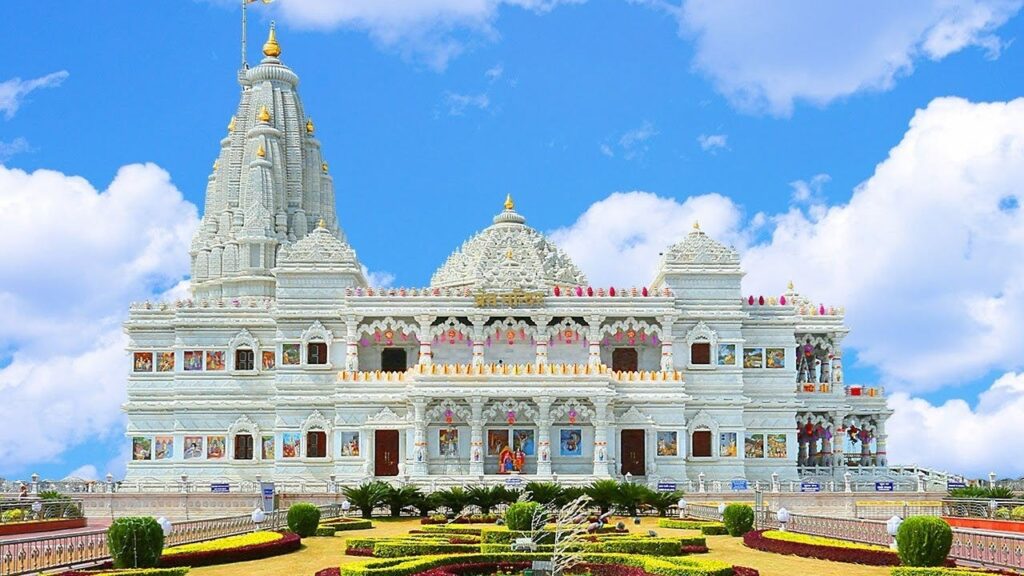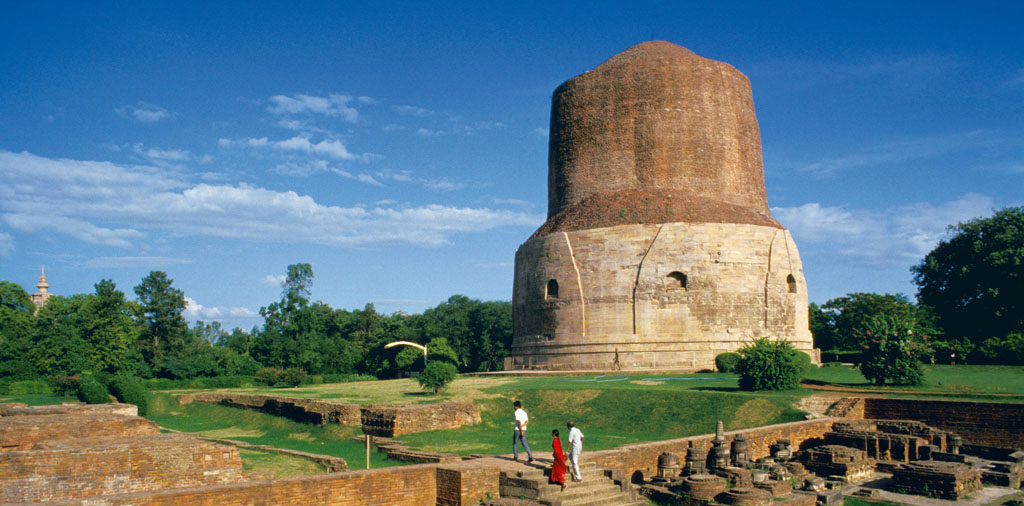Table of Contents
- Uttar Pradesh is the largest state in India by population and the fourth largest by area.
- It is bordered by Nepal and Uttarakhand to the north, Madhya Pradesh to the south, Haryana, Delhi, and Rajasthan to the west, and Bihar to the east, with Jharkhand and Chhattisgarh to the southeast.
- The state covers an area of 238,566 km2.
- Lucknow serves as the administrative and legislative capital.
- Prayagraj is the judicial capital.
- Uttarakhand was carved out of Uttar Pradesh on November 9, 2000.


Geography
- Indo-Gangetic Plain:
- The northern and central parts of Uttar Pradesh are predominantly covered by the fertile plains of the Indo-Gangetic plain.
- These plains are formed by the alluvial deposits brought by rivers like the Ganga, Yamuna, Ghaghara, and others.
- Himalayan Foothills:
- The northern part of Uttar Pradesh is marked by the foothills of the Himalayas.
- These foothills gradually rise from the plains and form a transition zone between the plains and the Himalayan mountain range.
- Low hills, valleys, and forested areas characterize the terrain in this region.
- Vindhyan Range:
- The Vindhyan Range runs parallel to the northern plains in the southwestern part of the state.
- The Vindhyan Range consists of low to medium-height hills, plateaus, and valleys.
- This region is known for its rugged terrain and is relatively less populated compared to the plains.
- River Valleys:
- Uttar Pradesh is intersected by several major rivers, including the Ganga, Yamuna, Ghaghara, and others.
- These rivers have carved out extensive river valleys across the state.
- The valleys are characterized by fertile plains, riverbanks, and floodplains, which are crucial for agriculture and settlements.
- Terai Region:
- The northeastern part of Uttar Pradesh, bordering Nepal, is part of the Terai region.
- The Terai is a low-lying area characterized by marshy grasslands, forests, and wetlands.
Rivers
- Ganga:
- Origin: The Ganga originates from the Gangotri Glacier in the Himalayas in Uttarakhand.
- Course: It flows through the northern part of Uttar Pradesh, passing through cities like Haridwar, Kanpur, Prayagraj (Allahabad), and Varanasi, before entering the state of Bihar.
- Tributaries: Some of its major tributaries in Uttar Pradesh include the Yamuna, Ghaghara, and Gandak rivers.
- Importance: It is an important river for irrigation, transportation, and tourism. National Waterway 1 covers a stretch of the Ganga River in the state.
- Yamuna:
- Origin: The Yamuna originates from the Yamunotri Glacier in the Himalayas in Uttarakhand.
- Course: It flows parallel to the Ganga and joins it at Prayagraj (Allahabad) in Uttar Pradesh.
- Tributaries: The major tributaries of the Yamuna in Uttar Pradesh include the Chambal, Betwa, and Ken rivers.
- Importance: The Yamuna is an important river for agriculture, irrigation, and water supply in Uttar Pradesh. It is also considered sacred by Hindus.
- Ghaghara:
- Origin: The Ghaghara originates from the glaciers of the Himalayas in Tibet and Nepal. The river is known as Karnali in Nepal.
- Course: It enters Uttar Pradesh from Nepal and flows through the northern part of the state before joining the Ganga in Bihar.
- Tributaries: The Ghaghara is fed by several tributaries in Uttar Pradesh, including the Rapti, and Sarayu rivers.
- Gandak (also known as Narayani in Nepal):
- Origin: The Gandak originates from the Himalayas in Nepal.
- Course: It enters Uttar Pradesh from Nepal and flows through the northern part of the state before joining the Ganga in Bihar.
- Tributaries: The Gandak is fed by several tributaries in Uttar Pradesh, including the Burhi Gandak and Bagmati rivers.
- Gomti:
- Origin: The Gomti River originates from the Gomat Taal Lake, which is located in Pilibhit district.
- Course: The Gomti River flows through several districts of Uttar Pradesh, including Lucknow, Sultanpur, and Jaunpur. It eventually joins the Ganga River near the city of Varanasi.
- Tributaries: Some of the major tributaries include the Kalyani River, Sai River, and Gomti Damodar River.
Ecology
- Uttar Pradesh is home to diverse flora and fauna. The state has several wildlife sanctuaries and national parks, including Dudhwa National Park, Pilibhit Tiger Reserve, and Hastinapur Wildlife Sanctuary.
Natural Resources
- Limestone: Found in the Mirzapur, Sonbhadra, and Varanasi districts.
- Coal: Mined in the Sonbhadra district.
- Gypsum: Found in the districts of Banda, Sonbhadra, and Jhansi.
- Dolomite: Occurs in the districts of Mirzapur, Sonbhadra, and Lalitpur.
Economy
- Meerut:
- Sports Goods Industry: Meerut is known as the “Sports City of India” due to its sports goods industry. It manufactures a wide range of sports equipment, including cricket bats, balls, and other sporting accessories.
- Scissors and Surgical Instruments: Meerut is also famous for its production of scissors and surgical instruments.
- Lucknow:
- Chikan Embroidery: Lucknow is renowned for its traditional chikan embroidery, which is a delicate and intricate form of hand embroidery.
- Aerospace and Defense: Lucknow has emerged as a key hub for the aerospace and defense industries, with the presence of institutions like Hindustan Aeronautics Limited (HAL) and various defense manufacturing units.
- Varanasi:
- Handloom and Textiles: Varanasi is famous for its handloom industry, particularly the production of Banarasi silk sarees and fabrics.
- Kanpur:
- Leather and Tannery: Kanpur is known for its leather and tannery industry, which is one of the largest in India. The city produces a wide range of leather products, including shoes, bags, garments, and accessories.
- Chemicals and Fertilizers: Kanpur also has a significant presence in the chemicals and fertilizers industry, with several chemical manufacturing units and fertilizer plants operating in the city.
- Agra:
- Leather and Footwear: Agra is famous for its leather and footwear industry, particularly the production of leather shoes and other leather products.
- Tourism: Agra is best known for the iconic Taj Mahal, which attracts millions of tourists from around the world. Tourism is a major source of revenue for Agra, supporting a wide range of businesses in the hospitality and tourism sectors.
- Moradabad:
- Brass Handicrafts: Moradabad is renowned for its brass handicraft industry, producing a wide range of brassware, including utensils, decorative items, and religious artifacts.
- Aligarh:
- Lock Industry: Aligarh is famously known for its lock industry. The city is one of the largest locks producers in India, manufacturing a wide range of locks for domestic and commercial use.
- Kannauj:
- Perfume and Fragrance Industry: Kannauj is renowned as the “Perfume City of India” due to its long-standing tradition of producing perfumes and fragrances. The city manufactures a wide variety of traditional and modern perfumes using natural ingredients.
- Essential Oils and Attars: Kannauj is also known for its production of essential oils and attars (natural fragrances).
- Bhadohi District:
- Carpet Industry: Bhadohi district, also known as the “Carpet City” or “Mirzapur-Bhadohi Carpet Cluster,” is famous for its carpet industry.
- The district is one of the largest producers of hand-knotted carpets and rugs in India.
- Noida:
- Information Technology (IT) and Information Technology Enabled Services (ITES): Noida is one of the major hubs for the IT and ITES industries in India. The city hosts numerous IT companies, software development firms, and business process outsourcing (BPO) companies.
- Electronics Manufacturing: Noida is also a key center for electronics manufacturing, with several electronics companies setting up manufacturing units in the city. The Noida Special Economic Zone (NSEZ) and other industrial areas in the city host numerous electronics manufacturing units, producing a wide range of electronic goods and components.
- Real Estate and Infrastructure: Noida is known for its well-planned infrastructure, modern residential complexes, and commercial spaces. The city’s booming real estate sector attracts developers, investors, and homebuyers from across the country.

